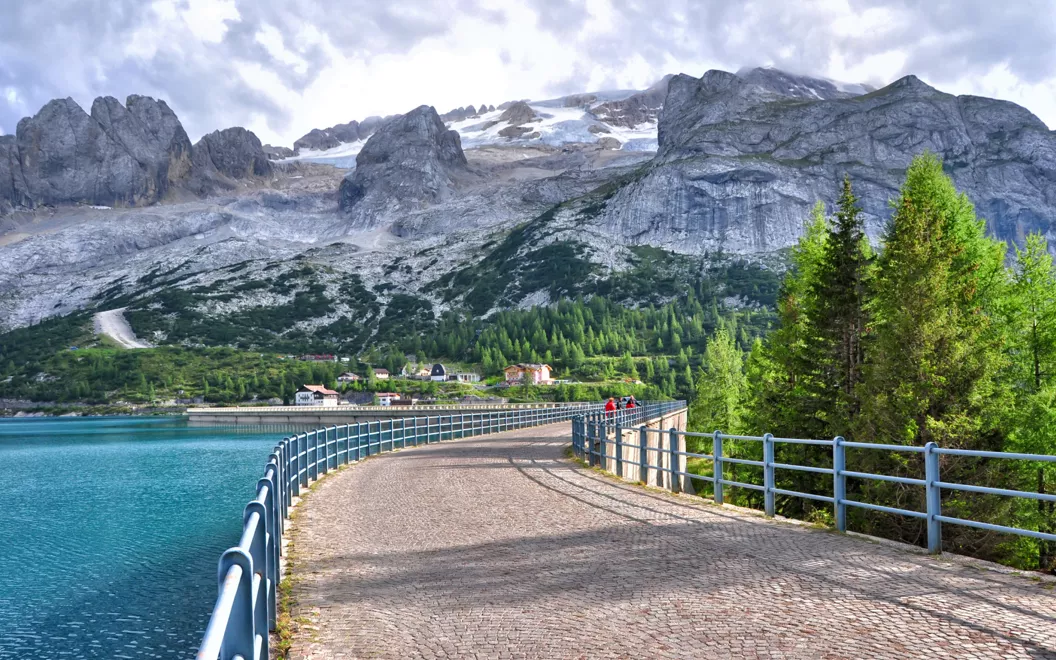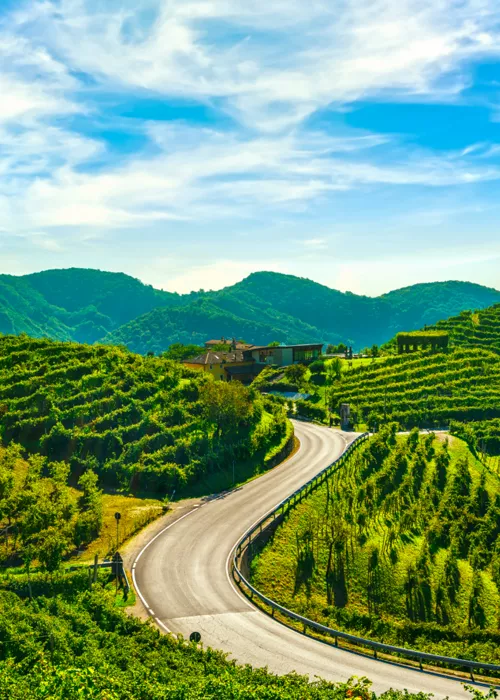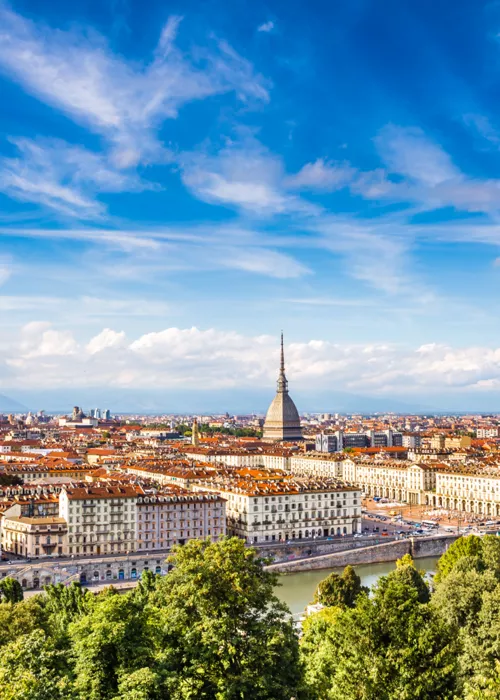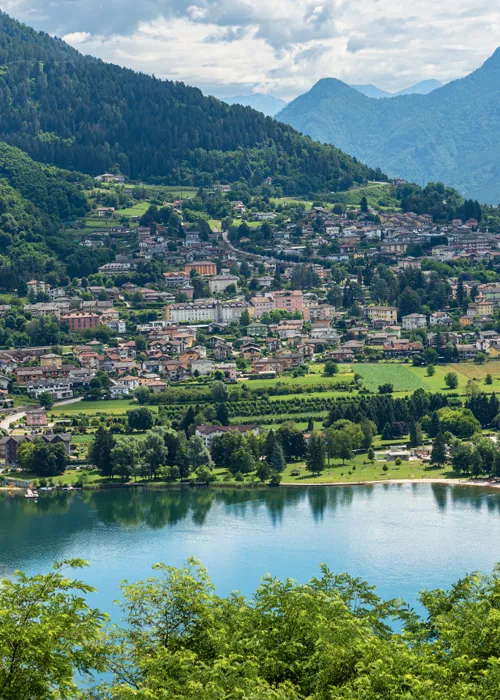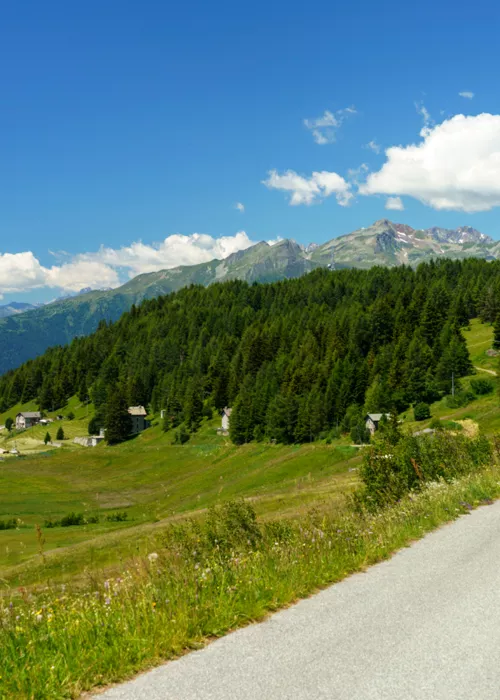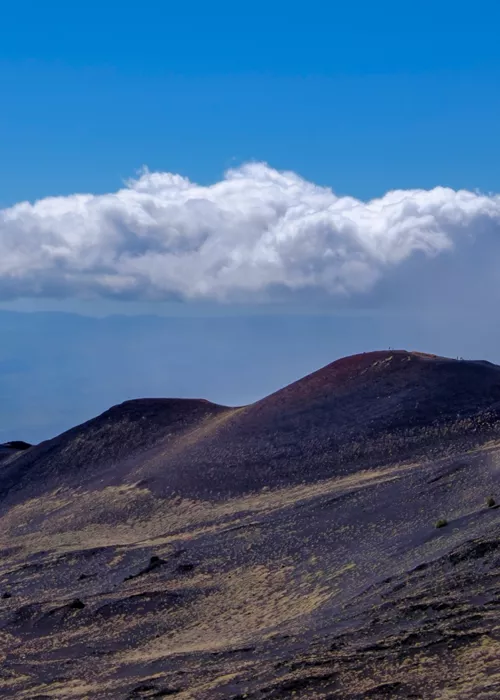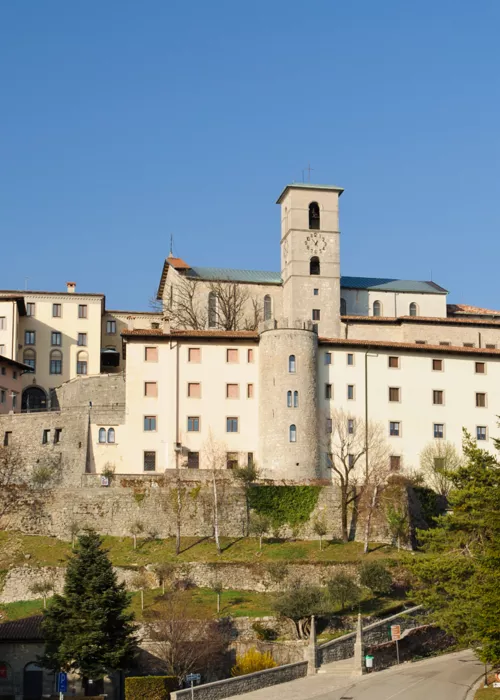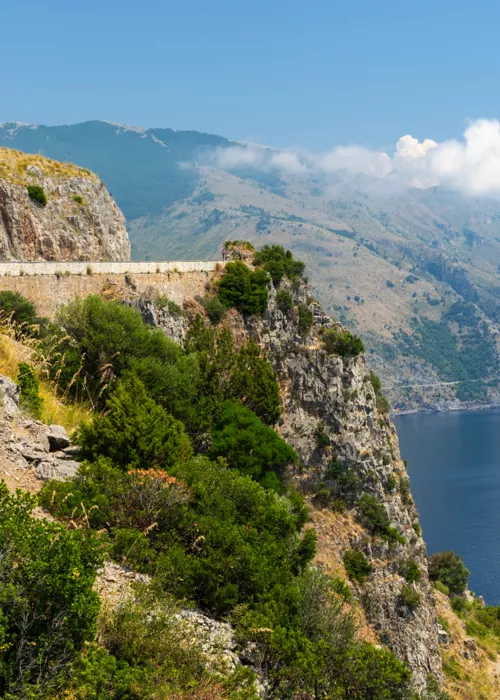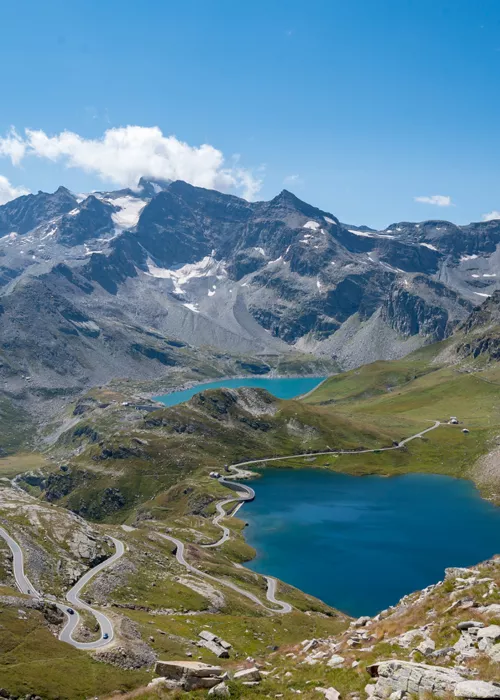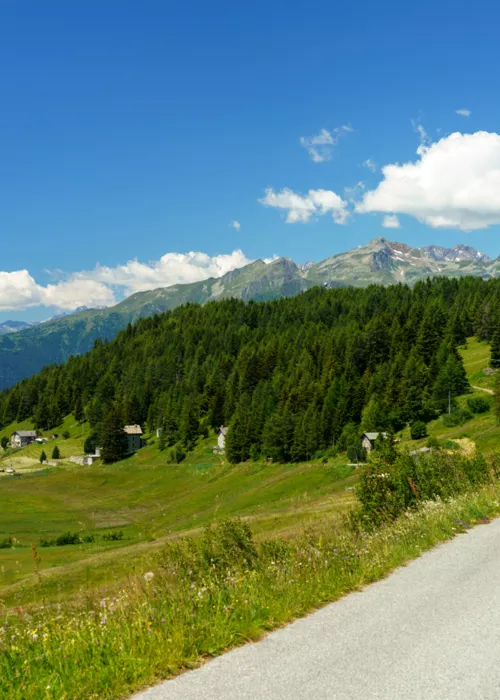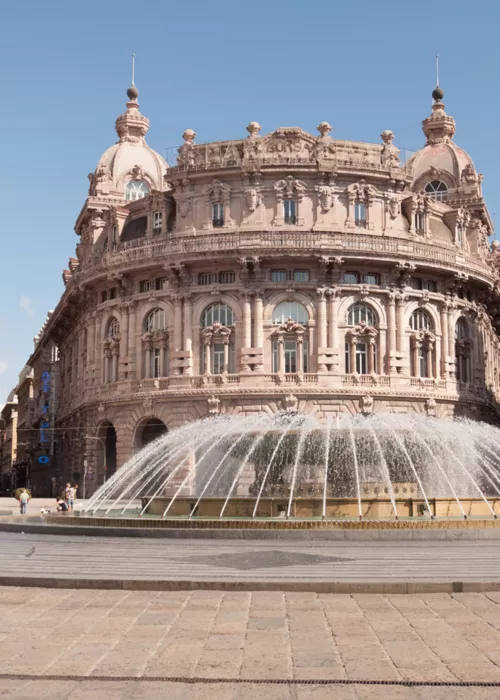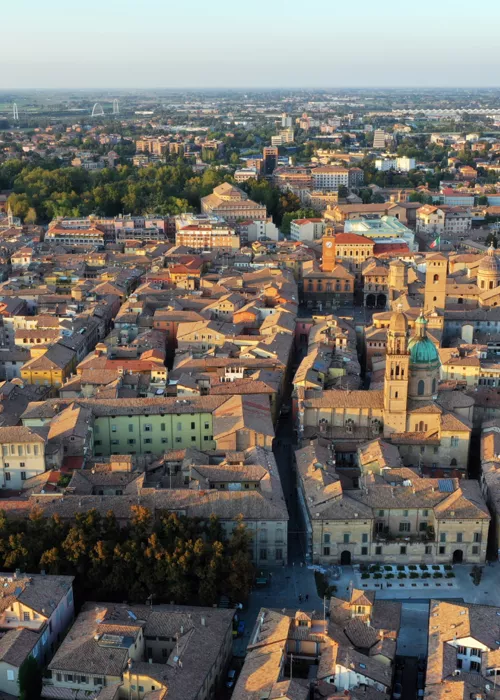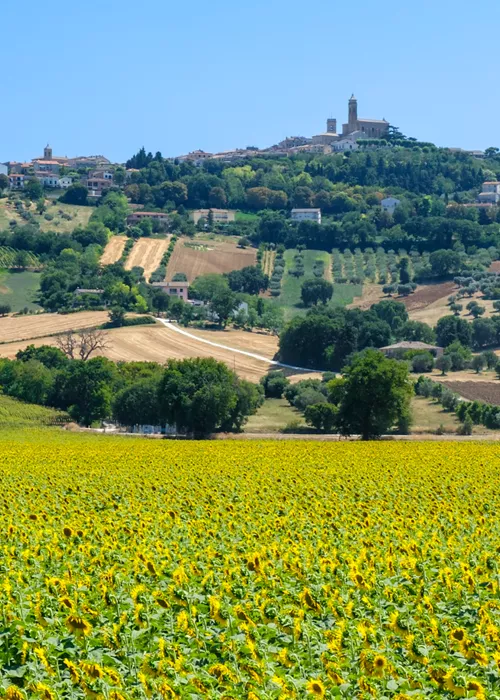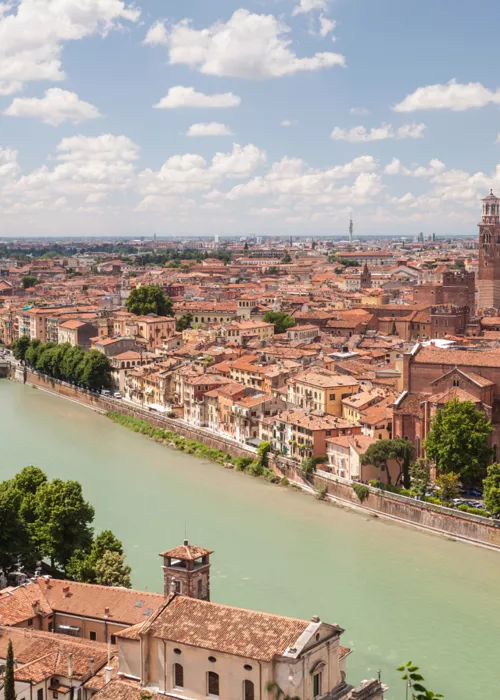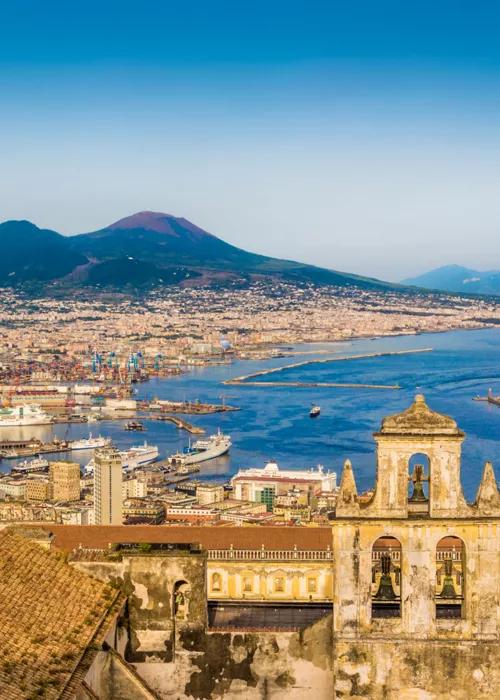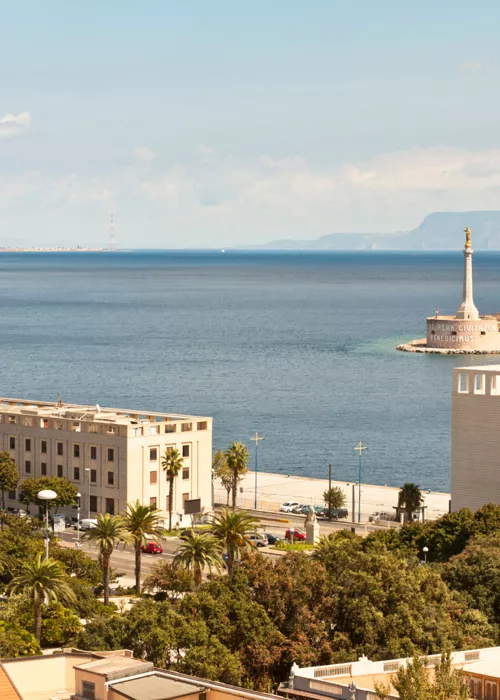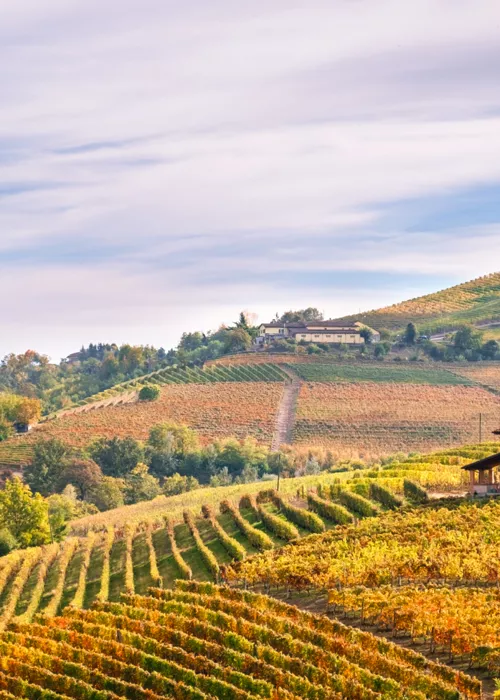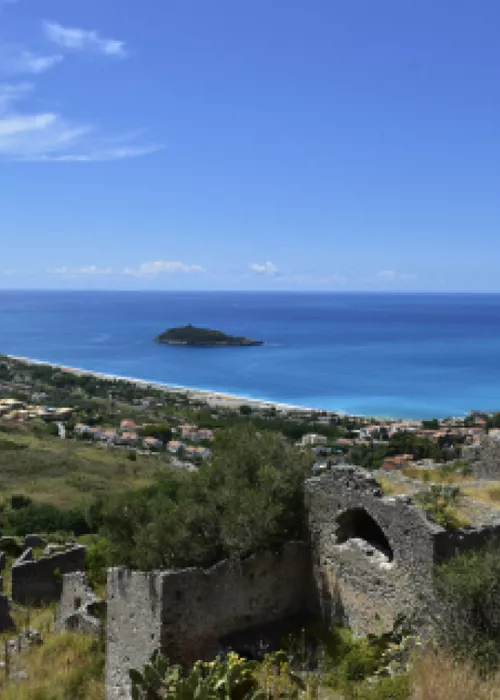At Belluno, surrounded by the memories of Dino Buzzati

Elegant, on a human scale, set in an amphitheatre of mountains. But Belluno is first and foremost the city of the writer Dino Buzzati, who was born in San Pellegrino, 2 kilometres from the town, where you can (in fact, you must) visit his birthplace: the 16th-century Villa Buzzati, a typical Venetian residence with its façade covered in frescoes. Another artist has left his mark on this place: Andrea Brustolon, the Belluno master of cabinet-making, so much so as to be called the ‘Michelangelo of wood.’ Two of his masterpieces are on display in the church: the Death of St Francis Xavier and the Crucifixion. A third, perhaps the most famous, is the angel that soars 72 metres from the bell tower of St Martin’s Cathedral. That’s not all. While you are in Piazza Duomo, take a look at the Palazzo dei Rettori, a wonderful example of the Venetian Renaissance. At this point, you are ready to move on from artistic marvels to natural wonders. It is time to get on your bike and tackle the first part of the route, which descends briefly into the Piave Valley and then climbs back up towards the mountains.
In Val di Fassa, in the slipstream of the champions

At Cencenighe Agordino, where the Val del Biois and Val Cordevole join, the ascent towards San Pellegrino Pass begins: 20 kilometres with a bittersweet taste, amidst marvellous landscapes and gradients that, past Falcade, exceed 15 per cent. Behind the pass, however, paradise opens up: it is the Val di Fassa, green surfaces bejewelled by some of the most spectacular peaks in the Dolomites, such as the Sasso Pordoi, the Torri del Sella, the Catinaccio and the Marmolada. It is difficult to choose just one where we suggest a stop, but we will try. Moena, surrounded by pine, larch and fir forests. Vigo di Fassa, where the hamlet of San Giovanni houses the Museo Ladin de Fascia, dedicated to Ladin culture. Or Canazei, crossroads of routes to the most famous passes, which connect the Val di Fassa to the other Ladin valleys. Now is the time to attack the myth: Pordoi Pass (2,239 metres above sea level), scene of some of the most beautiful pages of our cycling history. One above all? At the Giro d’Italia in 1940, it was on these hairpin bends that champion Gino Bartali spurred rookie Fausto Coppi, who also thanks to his help conquered the summit and thus ensured his first Giro triumph. But if Coppi suffered there, it doesn’t have to happen to you: it’s an 11.8 km climb at 6.8 per cent averagely. You can do it!
On the Marmolada, in memory of the Great War

The descent into the Valle di Fodom, with lovely Arabba, might tempt you to stop. Why leave a place like this? But another venture (if you wish) awaits you: the conquest of the Marmolada. On the way up you come across the enchanting village of Sottoguda, dotted with old barns (the so-called tabièi) and stone houses lovingly decorated by the locals. From Malga Ciapela begins the final part of the ascent to Fedaia Pass, on the border between Veneto and Trentino-Alto Adige (2,057 metres above sea level). From this point, the gradients do not drop below 10 per cent, with frequent points at 18 per cent. When you reach the pass, you are at the foot of the mountain. The last thing that will cross your mind is to leave this place without having explored it. If you still have strength in your legs, you can walk along the banks from Lake Fedaia, or take the cable car up to Punta rocca (where there is a beautiful panoramic terrace) and get off at Serauta station with the Marmolada Grande Guerra – the highest museum in Europe (at 3,000 metres) that tells the story of the battles that took place in these mountains during the First World War. Never had battles been fought at such high altitudes. Emotions to no end.

